Complete Solutions to Subjective of chapter NEWTON'S LAWS OF MOTION 2 of Class 11 book with complete answers and questions
| Class 11 | PHYSICS |
| Chapter | NEWTON'S LAWS OF MOTION 2 |
| CENGAGE PHYSICS | Subjective |
| Number Of Questions | 21 |
| Academic Year | 2023-24 |
A block of mass `m = 4 kg` is placed over a rough inclined plane as shown in fig . The coefficient of friction between the block and the plane `mu = 0.5 ` A force `F = 10N` is applied on the block at an angle of `30^(@)`. Find the contact force between the block and the plane.
`k`
 04:15View Solution
04:15View SolutionBlock A as shown in figure weight `1.40 N` and block B weight `4.20 N` The coefficient of kinetic friction between all surface is `0.30` Find the magnitude of the horizontal force (in N) necessary to drag block B to the left at constant speed if A and B are connected by a light , flexible cord passing around a fixed , frictionless pulled.
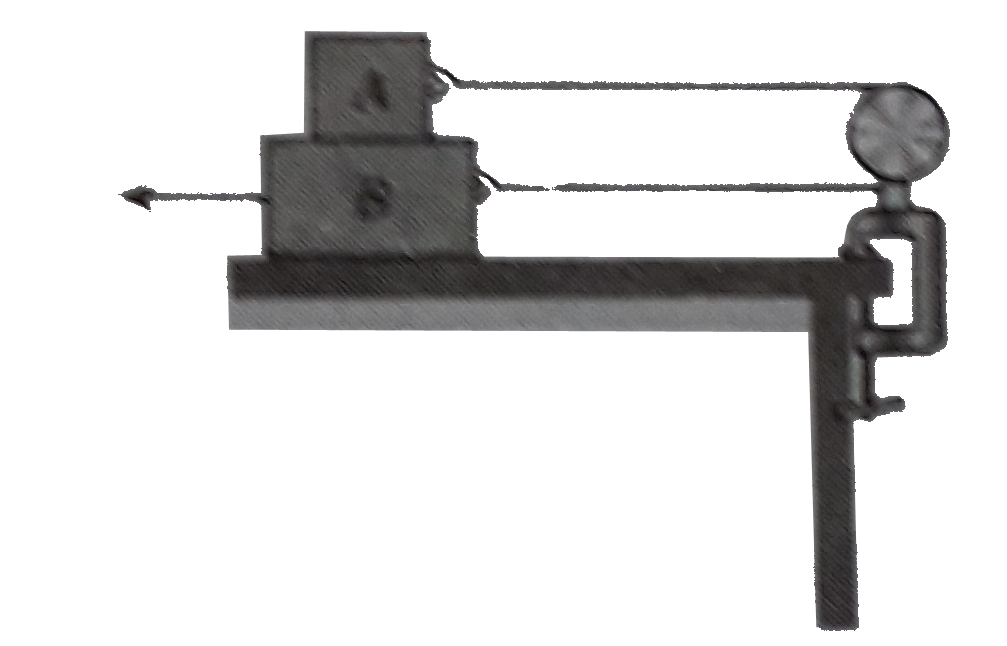 03:57View Solution
03:57View SolutionTwo block , with masses `m_(1)` and `m_(2)` are staked as shown in fig and placed on a frictionless horizontal surface . There is a friction between the two block .An external force of magnitude `F` is applied to the top block at an angle `alpha` below the horizontal . The coefficient of friction between `m_(1)` and `m_(2)` are `mu_(s)`
b. If the two blocks move together, find their acceleration
b . Calculate the maximum value of force so that blocks will move together
 03:57View Solution
03:57View SolutionBlock A has a mass of `30 kg` and block B a mass of `15 kg` . The coefficient of friction between all surface of contact are `mu_(s) = 0.15` and `mu_(s) = 0.10` Knowing that `theta = 30^(@)` and that the magnitude of the force `F` applied to block A is `250 N` Determine (a) acceleration of block A and (b) the tension in the rope
 View Solution
View SolutionBlock A weight `20 kg` placed on a smooth surface. Weight B of `2 kg` is mounted on the block . The coefficient of friction between the block and the weight is `0.25` Calculate the acceleration of the block and the weightand also the frictional force between the block and the weight when a horizontal force `2 N` applied to the weight as shown in fig What will these quantities be if the horizontal force is `20 N? (g = 10ms^(-2))`
 02:39View Solution
02:39View SolutionIn figure find the acceleration of `m` assuming that there is friction between `m and M` and all other surface are smooth and pulleys light and `mu = `coefficient of friction between `m and M`
 View Solution
View SolutionThe masses of the block A and B are `m and M` Between A and B there is a constant force `F` but B can slide frictionlessly on the horizontal surface A is set in motion with velocity `v_(0)` while B is at rest . What is the distance moved by A relative to B before they move with the same velocity
 04:21View Solution
04:21View SolutionTwo block of masses `m` and `M` are connected by a chord passing around a frictionless pulley which is attached to a rotating frame , which rotates about a vertical axis with an angular velocity `omega` If the coefficient of friction between the two masses and the surface are `mu_(1)` and `mu_(2)` respectively determine the value of `omega` at which the block starts sliding radially `(M gt m)`
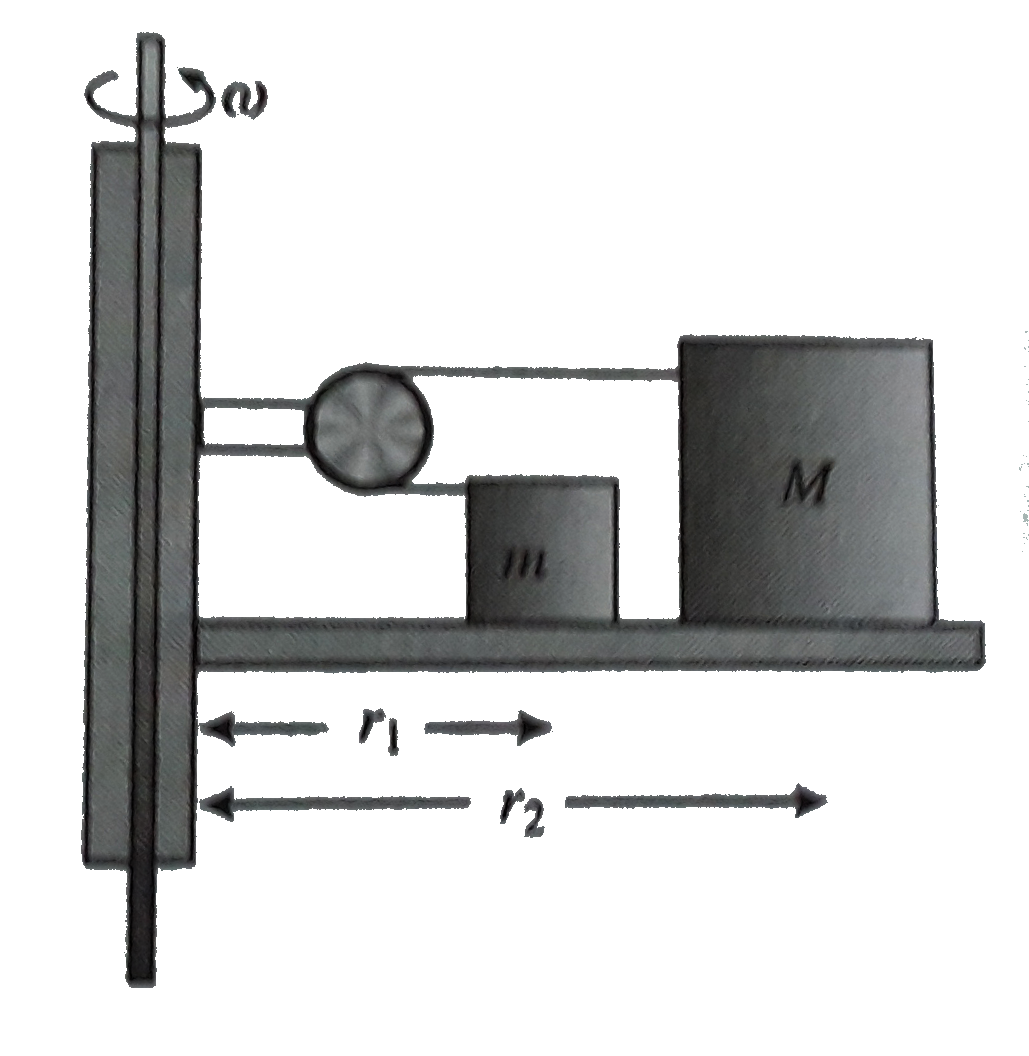 04:06View Solution
04:06View SolutionA block with mass `m_(1)` is placed on an inclined plane with slope angle `alpha` and is connected to a second hunging block with mass `m_(2)` by a cord passing over a small . Friction less pulley as shown in fig 7.247 . The coefficient of static friction is `mu_(2)` and the coefficient of kinetic friction is `mu_(s)`
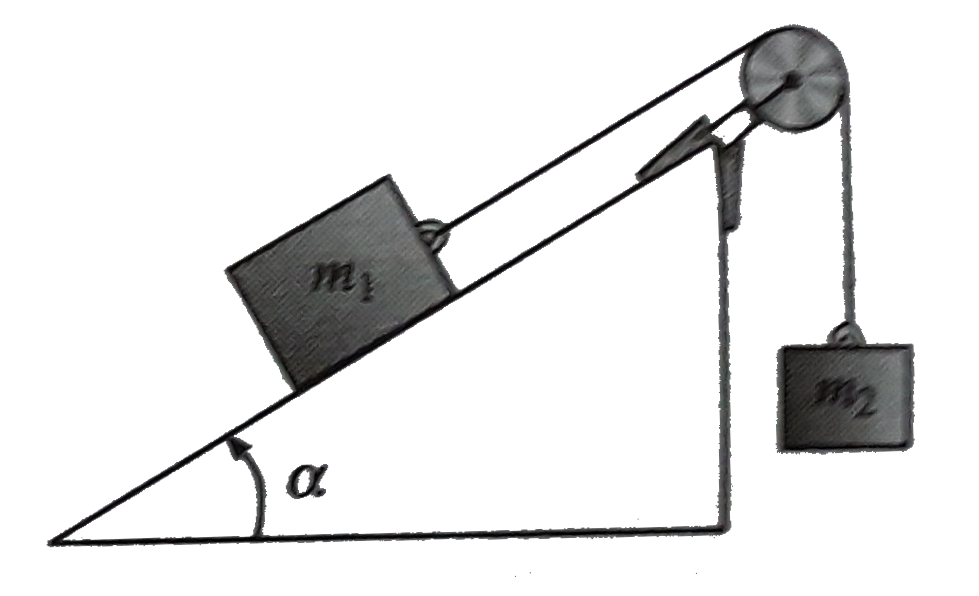
a. Find the mass `m_(2)` for which block `m_(1)` moves up plane at constant speed once it is set in motion
b. Find the mass `m_(2)` for which block `m_(1)` moves down the plane at constant speed once it is set in motion
c.For what range of `m_(2)` will the blocks remain at rest if they are released from rest?06:22View SolutionConsider three blocks placed one over the other as shown in Fig. Let as now pull the blocks with the force of magnitudes `18 N, 100 N` and `15 N` Take `m_(1) = m_(2) = m_(3) = 10 kg` If the coefficient of static and kinetic friction between all contacting surface are `mu_(g) = 0.2` respectively find the
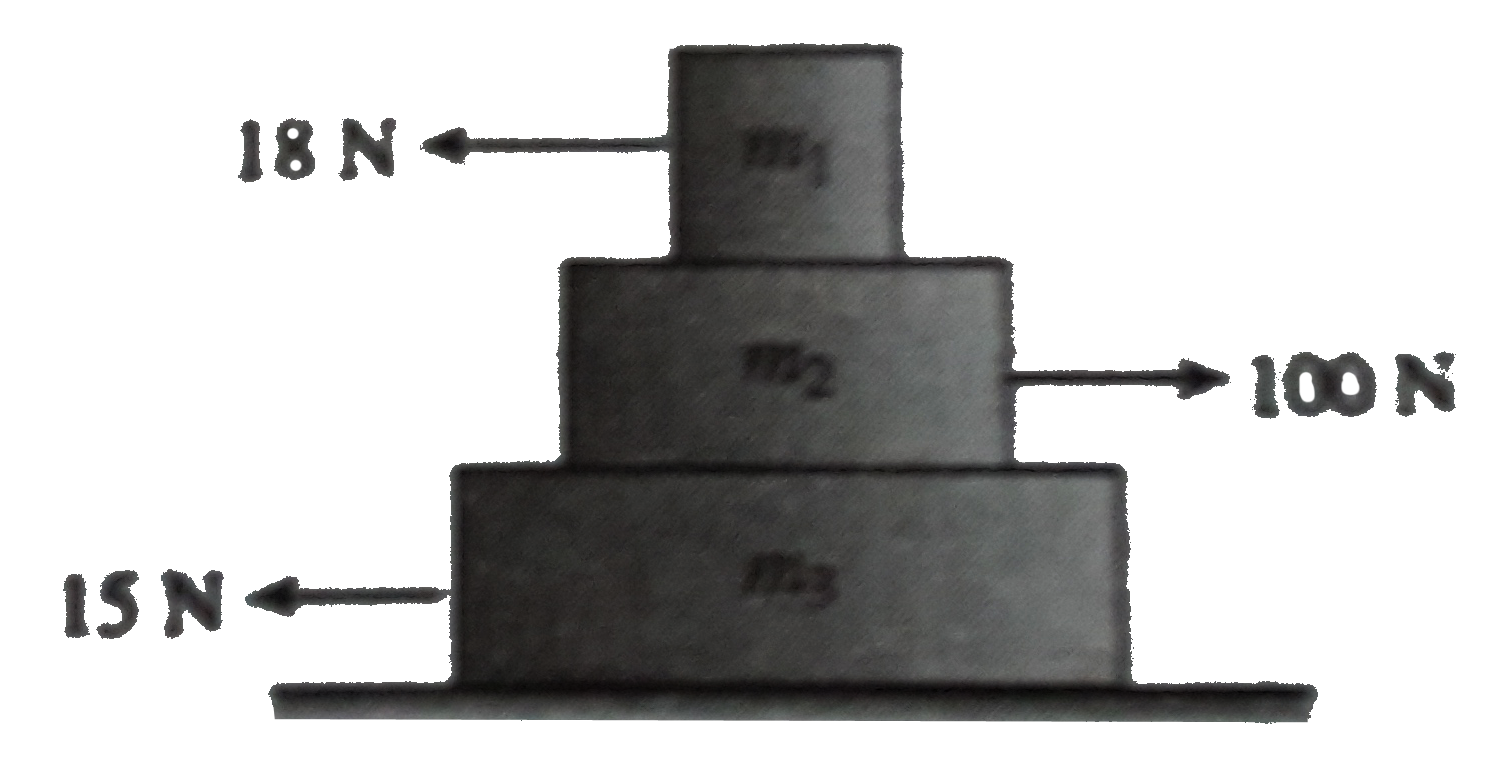
(a) Acceleration of the block s
(b) Friction at each surface06:20View SolutionFour block are arranged on a smooth horizontal surface as shown in figure .The masses of the blocks are given (see the fig ) The coefficient of static friction between the top and the bottom blocks is `mu_(s)` What is the maximum value of the horizontal force `F` applied to one of the bottom blocks as shown that makes all four block with the same acceleration ?
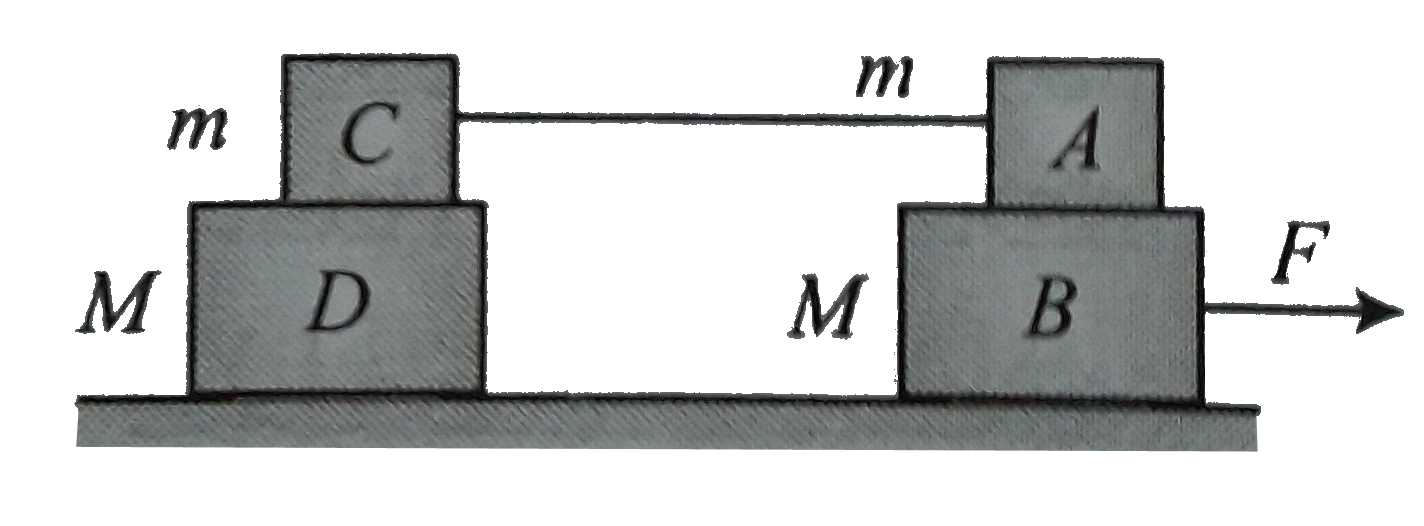 05:33View Solution
05:33View SolutionA block of mass `m` is pressed against a wall which is moving with an acceleration a as shown in figure If the block is pulled at an angle `theta` with downward vertical by a force `F` and it does not slide relative to the wall . Find the
a. friction force between the block and wall
b.inimum magnitude of `F` so as to cayse a relative sliding between the block and wall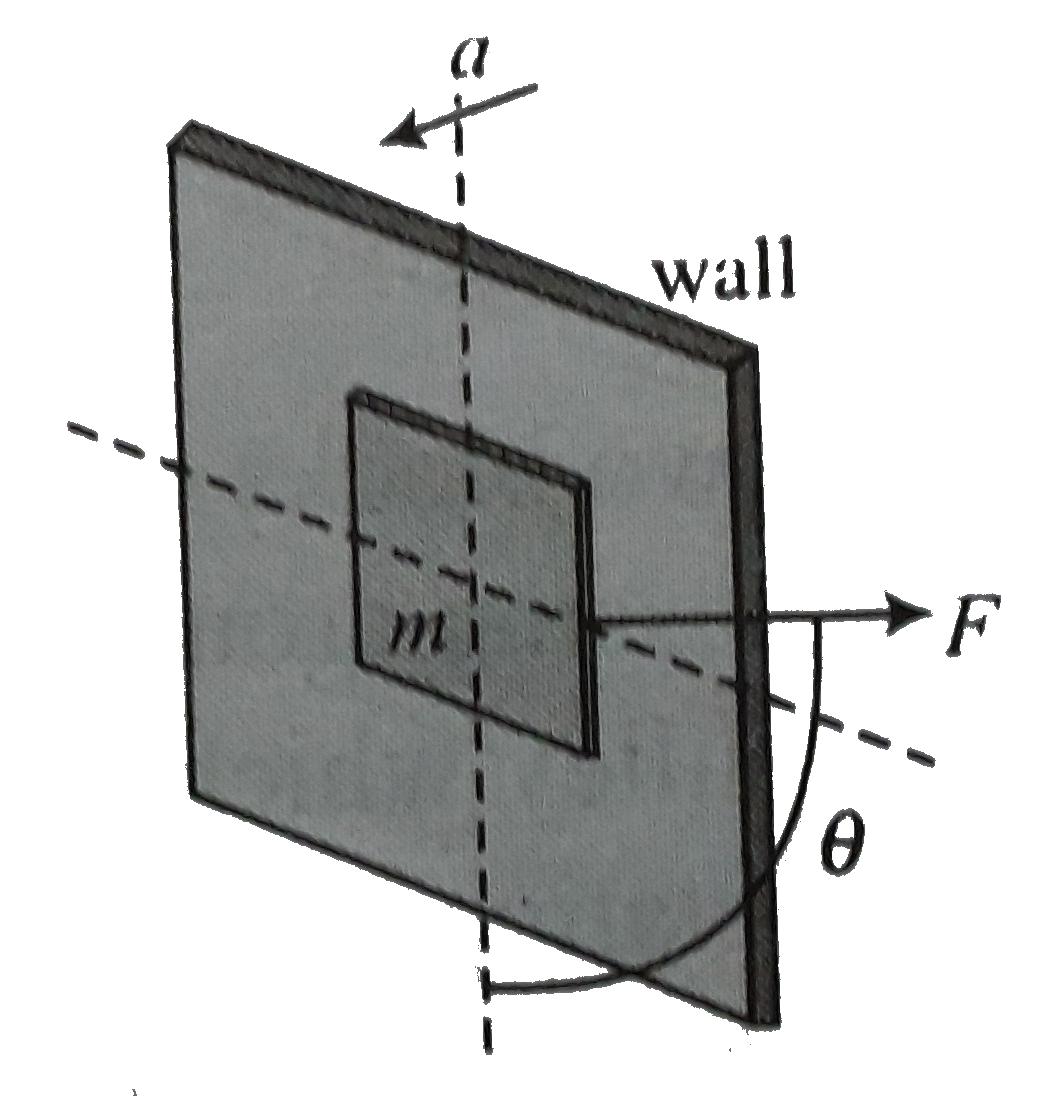 02:59View Solution
02:59View SolutionIn the arrangement shown in figure pulleys are mass of block A,b and C is `m_(1) = 5 kg m_(2) = 4 kg` and `m_(3) = 2.5 kg` respectively .Co-efficient acceleration of friction for both the plane is `mu = 0.50` Calculate acceleration of which block when system is released from rest
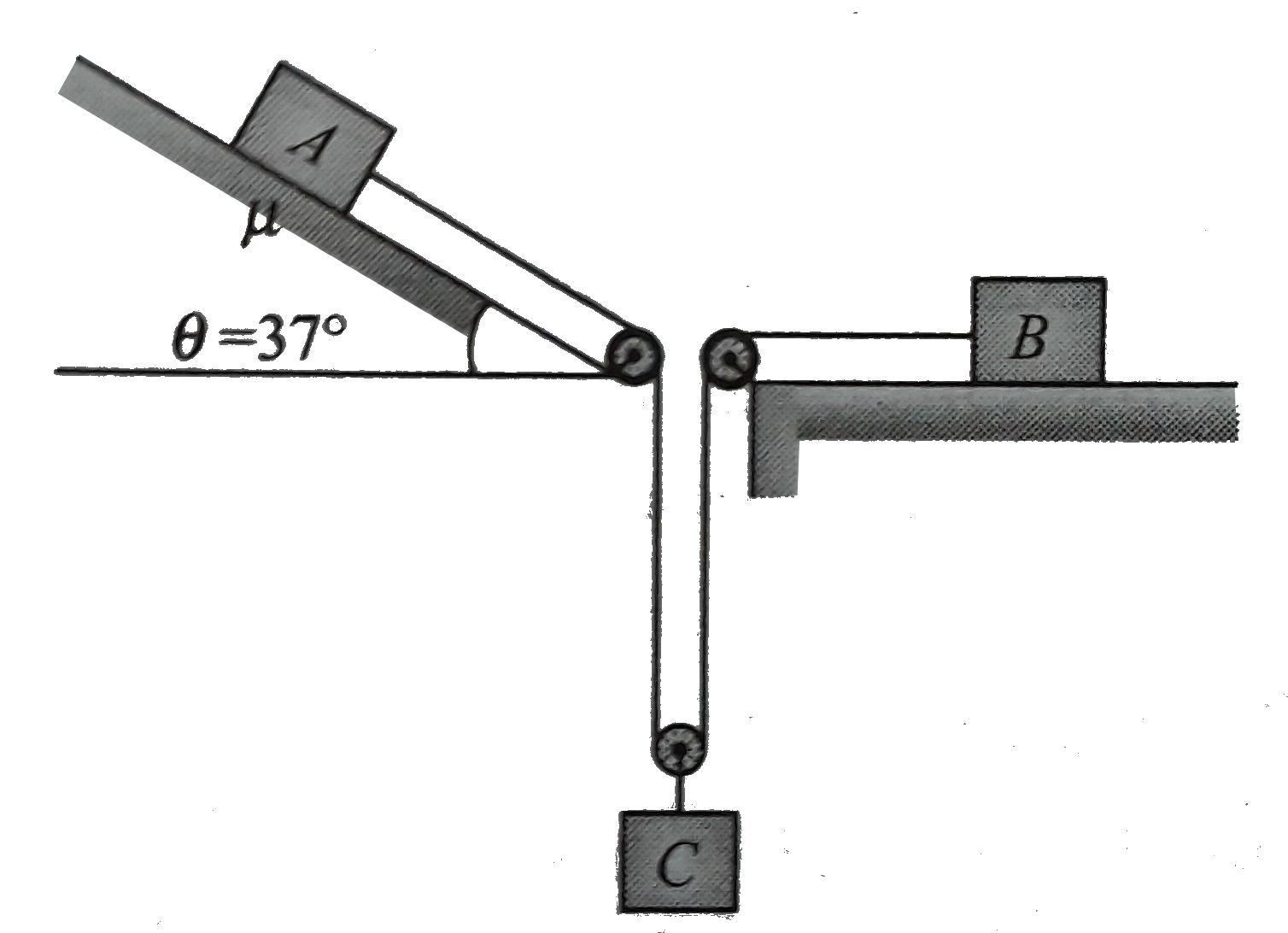 07:23View Solution
07:23View SolutionIn the arrangement shown in figure mass of blocks A,B and C is `18.5 kg .8 kg` and `1.5 kg` respectively . The bottom surface of A is A is smooth while coefficient of friction that between block A and C is `mu_(1) = 1//3` between B and floor is `mu_(2) = 1//5` System is relased from rest `r = 0` and pulley are light and friction Calculate acceleration of block A ,B and C
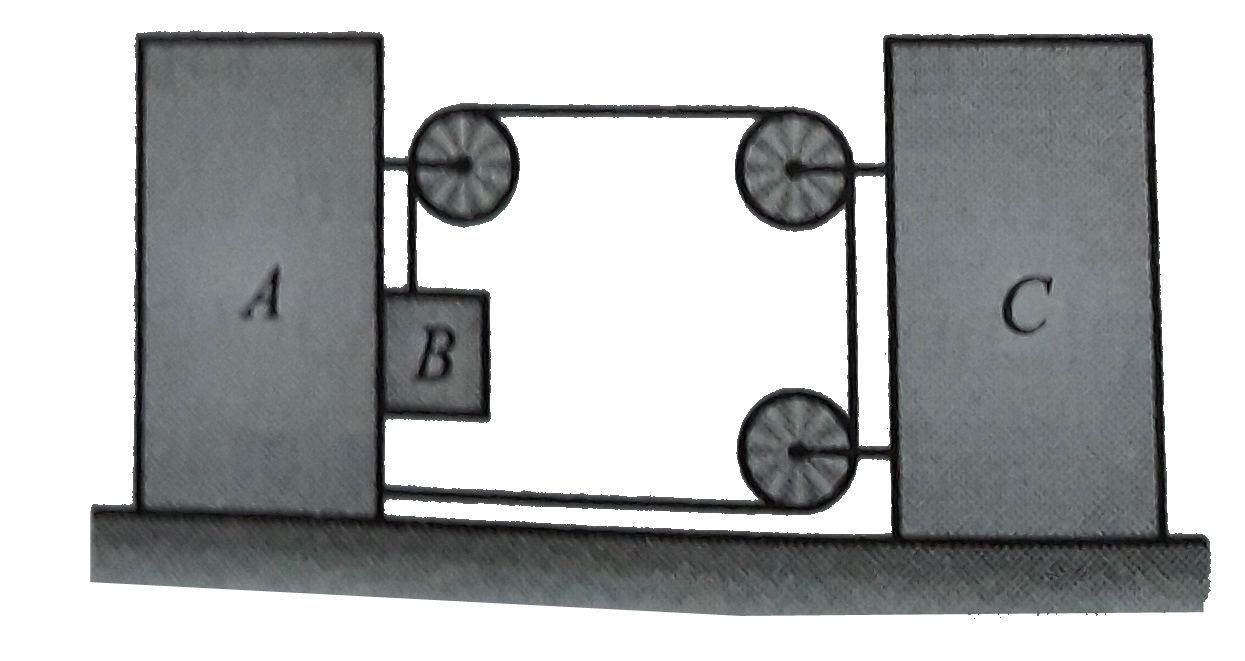 04:49View Solution
04:49View SolutionA cubical block is experiencing three forces `F_(1) = 20 N` acts at angle `45^(@)`with horizontal and lies in diagram plane of the cube `F_(2) = 30 N` acts along y- axis and `F_(3) = 40 N` acts in x- direction as shown in fig find the friction force acting on the block if it is at rest
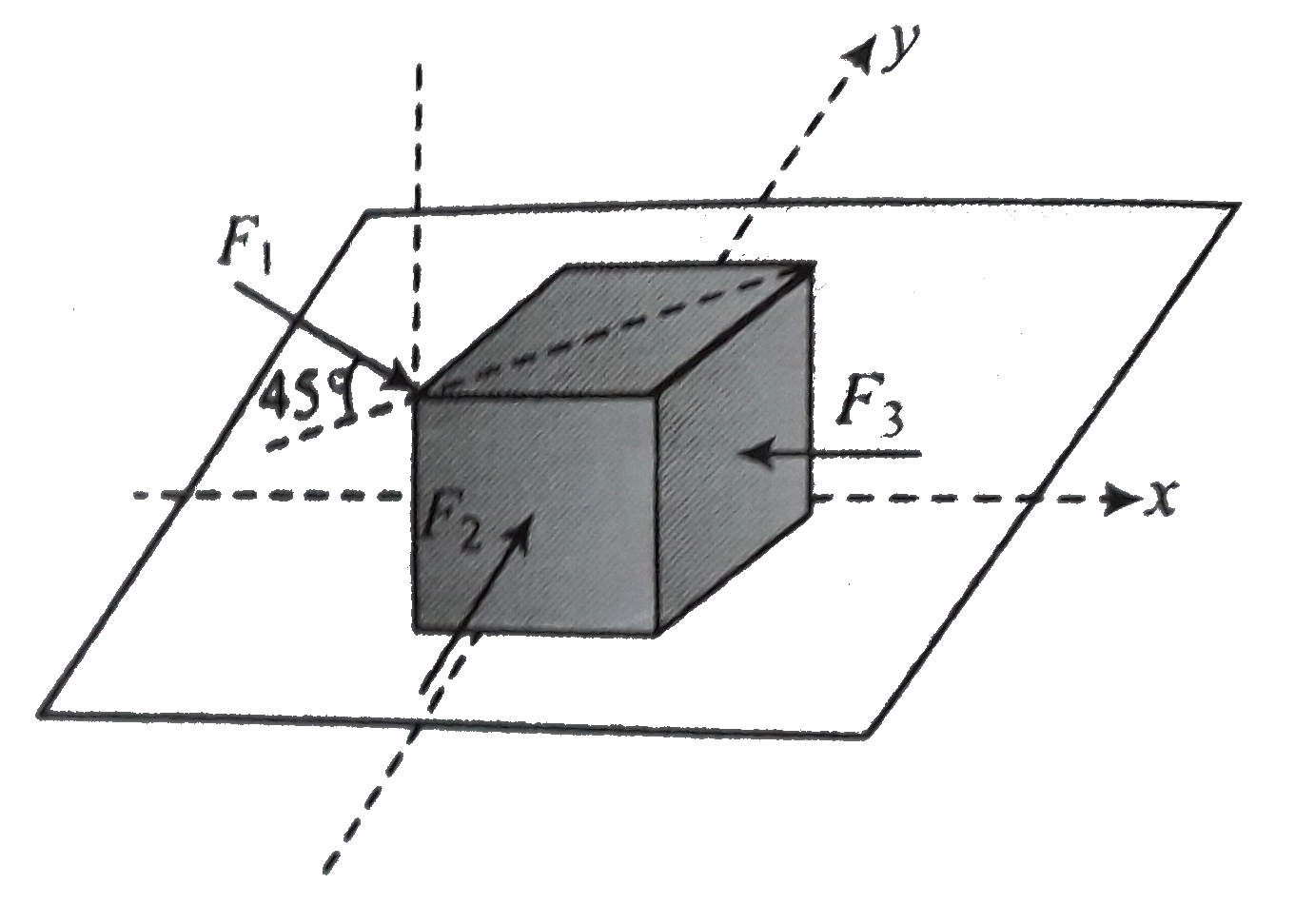 04:39View Solution
04:39View SolutionA block of mass `m = 3 kg` is resting over a rough horizontal surface having coefficient of friction `mu = 1//3` The block is pulled to the right by appliying a force `F` inclined at angle `37^(@)` with the horizontal as shown in fig .The forceincreases with time according to law `F = 2r` newton Calculate its velocity `v` at `t = 10s (g = 10 ms^(-2))`
 04:26View Solution
04:26View SolutionThe mass of the wedge shown in fig is `M = 4 kg` and that of block is `m = 1 kg` The horizontal surface beneath the wedge is smooth while the wedge and block is equal to `mu = 0.1` Taking `g = 9.8 ms^(-2)` and assuming pulley to be massless and friction . calculate maximum possible value of force `F` upto while the block will remain stationary relative to the wedge
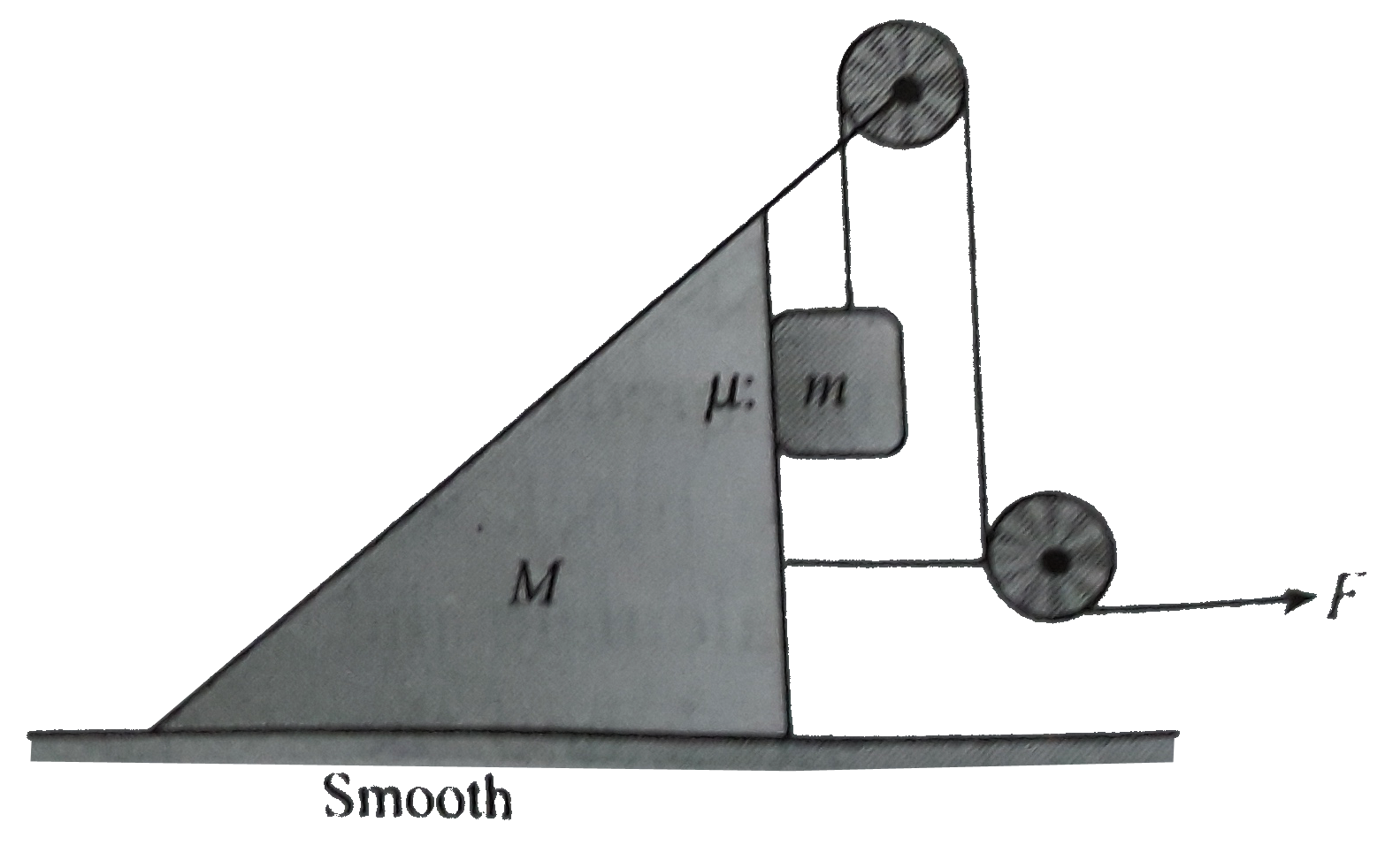 03:56View Solution
03:56View SolutionCalculate the maximum possible value of mass `m_(0)` of block C upto which blockA will remain stationary relative to B .If the length of block B is equal to `l = 50 cm` and mass of block C is `m_(3) = 2m_(0)` then calculate the time l when block A will topple from block B .If the system is released from rest
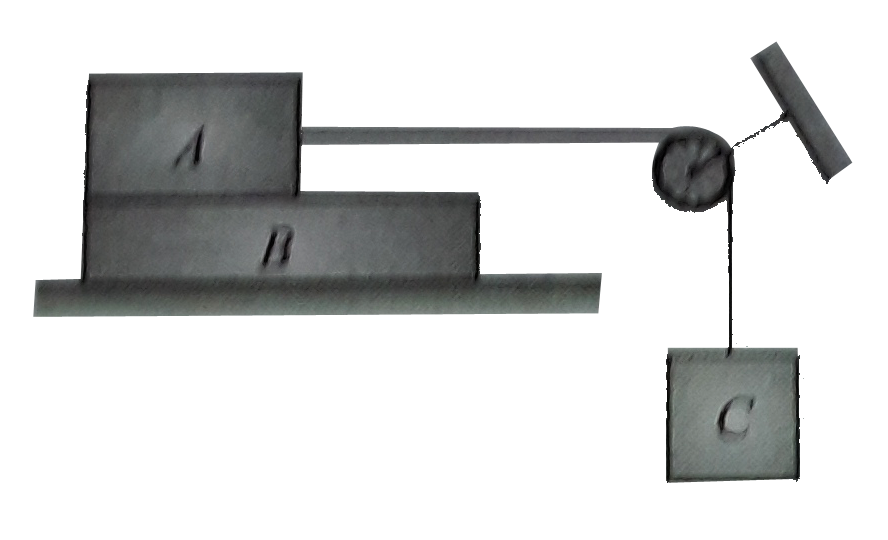 07:20View Solution
07:20View SolutionWith two hands you hold a cone motionless upside doen , as shown in figure The mass of the cone is `(m = 1 kg)` and the coefficient of static friction between you fingers and the cone is `(mu = 0.5)` what is the minimum normal force you must applywith each hand in order to hold up the cone? Consider only translational equilibruim
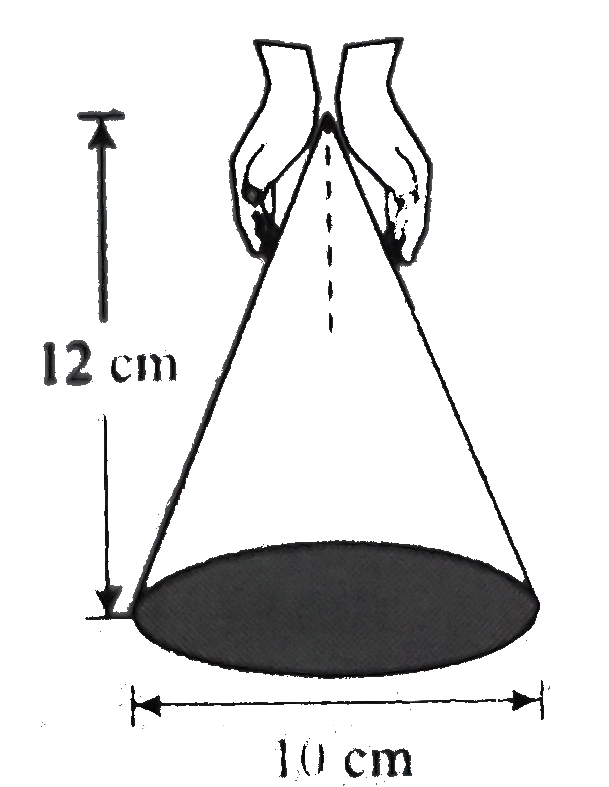 05:24View Solution
05:24View SolutionA prismatic block of mass `m` is kept on a groove . The bottom line of the groove makes an angle `theta` with horizontal . The angle between is `phi` If the groove is symmetrical with the normal to the inclined plane containing the bottom line of the groove

a. Find the coefficient of friction `mu_(0)` between the block and groove so that the block begins to slide.
b. If `mu gt mu_(0)` find the friction force on the block.
c. If `mu lt mu_(0)` find the acceleration of the block.05:25View SolutionA block of mass `m_(1) ` connected with another of mass `m_(2)` by a light spring of natural length `l_(0)` and stiiffness k is kept stationary on a rough horizontal surface . The coefficient of friction between `m_(1)` and surface is `mu` and the block `m_(2)` is smooth .The block `m_(2)` is moved with certain the block `m_(1)` in horizontal plane Find the (a) maximum to `m_(1)` and (b) acceleration of `m_(2)` in part(a)
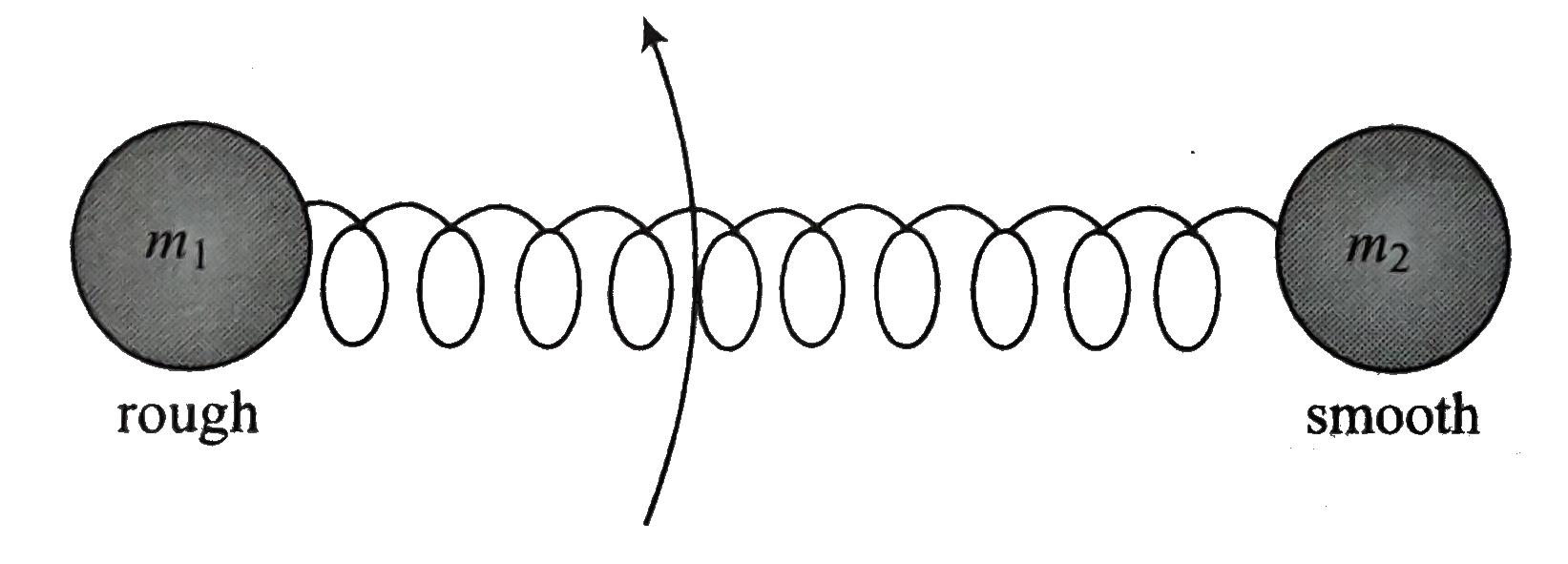 02:50View Solution
02:50View Solution
Subjective questions and complete solutions for chapter NEWTON'S LAWS OF MOTION 2 of CENGAGE PHYSICS (HINGLISH) of Class 11
